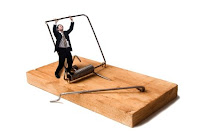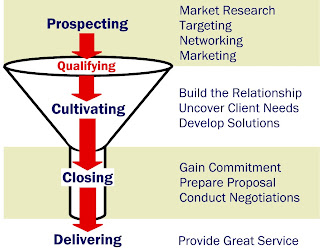 No, I'm not getting into that controversy (not in this space, at least). Instead I'd like to briefly explore the genesis of corporate cultures. It's apparent that some firm cultures are the result of intentional design. Others seem to have evolved more or less accidentally, the product of mostly unconnected, random circumstances. Most firm cultures probably fall somewhere in between, but more towards the "natural selection" model.
No, I'm not getting into that controversy (not in this space, at least). Instead I'd like to briefly explore the genesis of corporate cultures. It's apparent that some firm cultures are the result of intentional design. Others seem to have evolved more or less accidentally, the product of mostly unconnected, random circumstances. Most firm cultures probably fall somewhere in between, but more towards the "natural selection" model. - Their revenue grew more than 4x faster
- Their rate of job creation was 7x higher
- Their stock price grew 12x faster
- Their profit performance was 750% higher
Other studies have reached similar conclusions. That's not surprising when you consider the prevailing definition of corporate culture. It is the "sum of values, habits, and rules that influence how things get done within the organization." In a strong culture, everything is aligned towards greater proficiency in getting things done. That's not to suggest mere efficiency and productivity. Strong cultures are rooted in a core ideology that lends not only to doing things right, but doing the right things.
Here's my thesis: Cultures that have evolved by natural selection are to some degree dysfunctional because they lack alignment of "values, habits, and rules." Make no mistake, some are still successful. Consultant David Maister contrasts two cultural models among professional service firms: (1) the "one-firm firms" and (2) "warlord firms" (love that description!). Warlord firms are built around individual entrepreneurs who loosely collaborate but generally build their own domains of practice. When these individuals are highly talented, the firm can prosper--but there's usually a cost.
Warlord firms tend to be inefficient, slower to adapt to market changes, prone to internal conflict, and less effective in developing junior staff. These cultures are often exposed when there's a downturn or other change and a coordinated corporate shift in strategy is needed. Warlord firms are also notorious for divergent levels of client service, since shared values and practices are much more difficult to achieve.
One-firm firms, by contrast, are characterized by their alignment around shared values and practices. These firms are clearly the product of deliberate design and dogged effort because such community is reached only by paddling against the current of natural organizational entropy. Yet in that type of culture basic human needs are met, and this is the secret of their enduring success. People are generally more productive when they work within a principled, collaborative, structured, and nurturing environment.
There's another important facet of culture to mention here. Corporate culture is a composite of both formal and informal systems. Formal systems include strategy, policies, and procedures. Informal systems include values, attitudes, and habits. When the two are not aligned, the informal systems always trump the formal ones. That's why most strategy fails. It prescribes a new direction without doing the hard work of changing persistent values, attitudes, and habits. Thus it succumbs to the process of natural selection.
So with that background, let me suggest a few steps to creating a stronger corporate culture. You can read more about this in the article "Cultivating a Strong Company Culture" on my website.
- Assess your current culture
- Fortify your company values
- Align strategy with your culture, or visa verse
- Commit to regular communication
- Take steps to promote a sense of community
- Hire for cultural fit (this is critical!)
Particularly if your business is down, this might be an appropriate time to consider your firm culture. Does it reflect the kind of company you want to have? Does it position you for sustainable success? Are there shared values that guide all corporate behavior? If not, what changes are needed? Answering these questions may be far more crucial to your future than usual substance of our strategic plans and actions.







